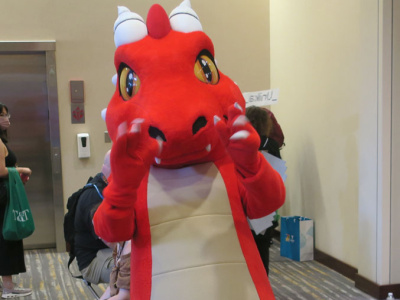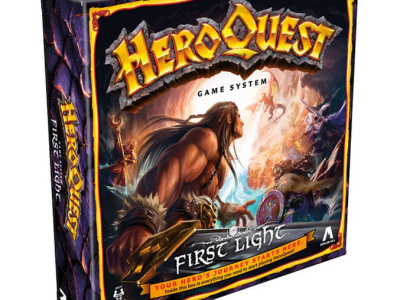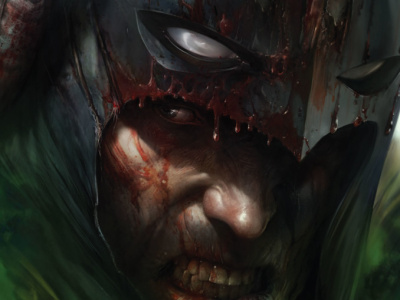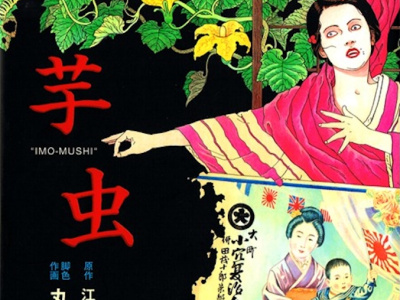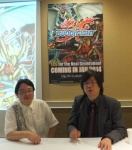 ICv2 interviewed Bushiroad CEO Takaaki Kidani and Future Card Buddyfight creator Yoshimasa Ikeda in conjunction with their U.S. tour (see "Bushiroad Provides First Look at New CCG") promoting Bushiroad’s worldwide release of the new game early next year (see "Worldwide Launch for New TCG").
ICv2 interviewed Bushiroad CEO Takaaki Kidani and Future Card Buddyfight creator Yoshimasa Ikeda in conjunction with their U.S. tour (see "Bushiroad Provides First Look at New CCG") promoting Bushiroad’s worldwide release of the new game early next year (see "Worldwide Launch for New TCG"). Tell us about the first Future Card Buddyfight products. When will they release?
Bushiroad CEO Takaaki Kidani: Two Trial Decks will be released January 24, 2014. A Booster Pack set will be released a week later, on January 31, 2014.
Do you plan organized play support?
Kidani: Big Bushiroad tournaments will be scheduled on Saturday/Sundays, split between Vanguard and Buddyfight. Weekly store tournaments will be similar to the Cardfight Vanguard organized play program currently in place.
What marketing support will you give the Future Card Buddyfight launch?
Kidani: It will be similar to the strategies used for Vanguard. We will run the English version anime on YouTube, uploading a little closer to the Japanese air date (rather than how Vanguard episodes are uploaded much later), nearly the same day as the Japanese version, and then to free TV. We will also air TV commercials on several TV outlets/channels in the US, like Cartoon Network, to showcase the anime.
How many releases do you plan for Future Card Buddyfight in 2014?
Kidani: Four different types of Booster Packs, six Trial Decks, and roughly three Extra Boosters.
You’re launching the English and Japanese games simultaneously--why did you decide to release in both languages at the same time?
Kidani: With the popularity of the Internet, the world already moves as one. If the anime runs in the U.S. say, for instance, a year after the Japanese air date, players would grow upset and want the anime sooner; so because of those reasons we will release them at the same time. In America, where it’s not so important, but also in Singapore, the Japanese version product comes out first, and therefore the Singaporeans buy the Japanese cards, even though English is the main language in Singapore. If people don’t buy the English cards, the game will not spread throughout the country.
How does the target market for Future Card Buddyfight differ from the target for your other games? It seems younger, for one thing--is that correct?
Kidani: In Japan, the target audience is younger than for other Bushiroad games, and roughly half of the target is elementary school children. We have promotions for each age group. In America our real target audience is everybody (elementary to upwards of college).
Do you expect Future Card Buddyfight players to be drawn from current players of other games, or from new players?
Kidani: In Japan, we expect a lot of new players, since our primary target audience is elementary school children. In America, we expect some players to come from other games, but we are targeting and hoping we have a large number of new players. Also, we want to target people that may have quit playing other card games in their past, and we want to re-ignite their interest in card gaming.
Three CCGs is more than any other company markets in the U.S.--why do you think the market will support three Bushiroad games?
Kidani: Bushiroad’s three card games in America will definitely grow the market. Up until 2005 in Japan the number of card games was limited. Since it was limited, the number of card stores was low and they were difficult to keep afloat. However, with the growing number of card games, the constant release of new product has kept the stores afloat and has continued their growth. Although America already has a large number of card stores, I believe we will see new card stores develop from the increase in new card games.
The reason why the market doesn’t grow is because although there are releases every year, the communication divide between stores and manufacturers is quite large; but in Japan this gap is much smaller. In America, manufacturers do not directly go to the stores and meet with the stores’ people. Bushiroad researches and utilizes the feedback we get from card stores to improve our games and contents.
We at Bushiroad feel very strongly about the relationship between stores and manufacturers and feel that it is the key to growth and success in the card game market.
Will the Future Card Buddyfight manga and anime be released in English?
Kidani: The English version anime will air on YouTube from January 2014. The Japanese version manga will be serialized in Coro Coro Comics starting in November in Japan.
Where do you expect Future Card Buddyfight to rank compared to your other games in Japan, and in the U.S.?
Kidani: We expect Vanguard and Buddyfight to rise in popularity and essentially become the big two in America and Japan.
In Japan, people who play card games and enjoy card games inevitably become owners or employees of card stores. Most do not enter the design/publisher realm, but I believe that we need more people to enter these realms of work.
Mr. Ikeda, the owner of a card store, became the creator of Buddyfight, which is a rarity in our market. I feel that this type of idea is revolutionary and would love to see this revolution occur in Japan and especially America. The players of card games can rise to prominence. I want to revolutionize the way card games are released and produced. Lots of card games have failed in America. I think this is the result of the developers of the games not doing a sufficient job to grow their respective games. Card games need to be tailored to their markets--their players, their store owners.
The rivals to our games are smartphone games, Nintendo 3DS games. Young people are very busy. When we make a card game we should make it a game that can be played quickly.
What will make Future Card Buddyfight popular?
Future Card Buddyfight creator Yoshimasa Ikeda: Even if the players are not 100% sure of the rules, the game play is very logical. As a player, you can imagine the scenario and use logic, and the answer should come to the player. For example, if a player does not understand a language, it is very hard to explain the rules of baseball to them. However, you could show them a soccer game, and they could probably learn by watching.
For Buddyfight, even if we don’t explain the specifics and rulings, the game is easy enough to learn from watching. However after learning the rules, the game suddenly has an interesting range of depth to it for the player. The game is easy enough for elementary school children, but is challenging enough for players who want to delve further.
The participants from today’s demo were more adults, but I noticed that they enjoyed the demo on multiple occasions.
Finally, I grew up with card games. I come from a card player mentality as an avid player who has made the shift to developer. I want people to enjoy Buddyfight just as I have enjoyed other card games throughout my life.



